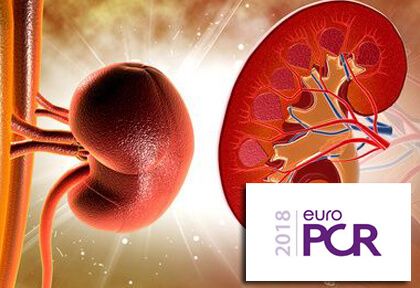After several trials with neutral outcomes, renal denervation had been demoted for some time. However, this new study presented at EuroPCR 2018 and simultaneously published in the LANCET brings back the technique with improved devices that seem to yield improved outcomes.
 The study included patients with uncontrolled arterial hypertension under medical treatment.
The study included patients with uncontrolled arterial hypertension under medical treatment.
Eligible patients had office systolic blood pressure (BP) between 150 and 180 mmHg, and office diastolic BP ≥90 mmHg, or 24 hr. ambulatory BP between 140 and 170 mmHg, in addition to having received at least 3 antihypertensive drugs with stable doses for a period of 6 weeks.
All patients received renal angiography and were randomized, single-blind, sham-controlled to renal denervation vs. placebo.
It included 467 patients. This study reports the first 80 randomized patients, 38 receiving renal denervation vs. 42 receiving placebo.
24 hr. ambulatory arterial BP was significantly reduced from baseline to 6 months in the renal denervation group (mean reduction for systolic BP was 7 mmHg; p=0.0059, and 4.3 mmHg for diastolic BP; p=0.0174).
Treatment compliance was por and close to 60%.
Título original: SPYRAL HTN-ON MED: six-month results from the randomized, blinded, sham- controlled trial on renal denervation in the presence of antihypertensive medications.
Presentador: David E. Kandzari.
SPYRAL-HTN-ON-MED-articulo-original
Get the latest scientific articles on interventional cardiologySubscribe to our weekly newsletter
We are interested in your opinion. Please, leave your comments, thoughts, questions, etc., below. They will be most welcome.





